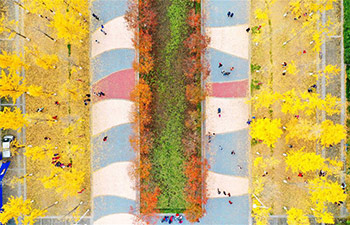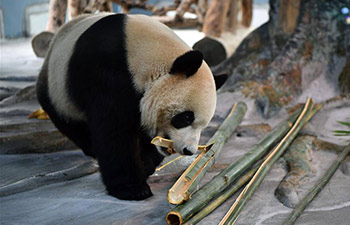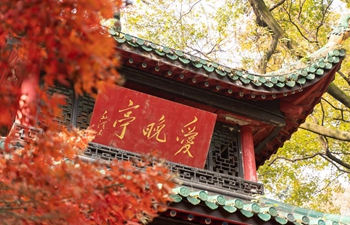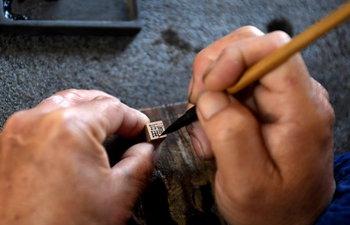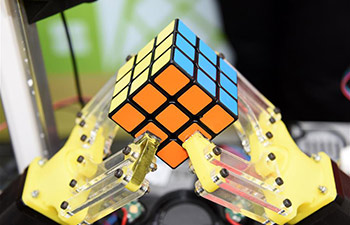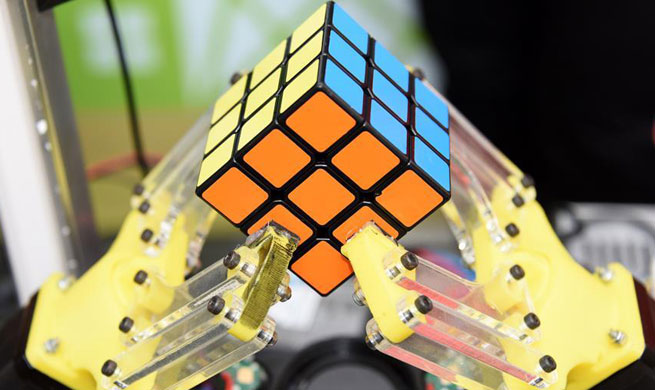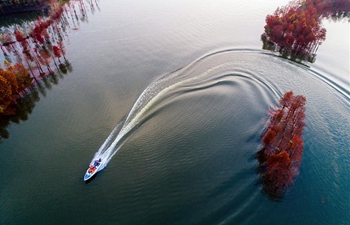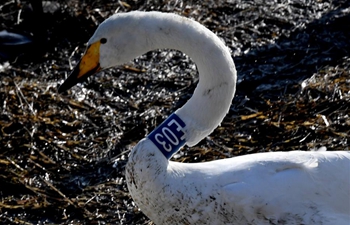SHENYANG, Nov. 26 (Xinhua) -- Quail, goose and ostrich eggshells carved with traditional Chinese patterns and figures are laid side by side on the shelves as warm spotlights underneath shine through, giving off a translucent and elegant glow.
Welcome to Yu Wen's studio in the city of Dandong, in northeast China's Liaoning Province. Her display is just as much about eggs as it is about Chinese culture.
Egg carving is often called "the most fragile art," as it requires the ultimate precision and care before, during and even after the creation.
Yu, 49 and grand-daughter of a known local painter, has been practicing this craft for 25 years.
Over the years, Yu estimated that she had used more than 10,000 eggs.
To start, she drills a hole on the bottom of the egg to drain the content inside, uses a small knife to remove the film on the shell, and leaves it to dry in the shade, as the sun will make it too brittle for carving.
Then she uses a burin to carve on the surface of the shell. The process takes one or two days for a chicken egg, and up to a month for complicated works for an ostrich egg.
"Concentration is very important," Yu said, "The shells are often .3 millimeters thick, a tiny bit of distraction could ruin the whole work."
Years of work have left many tiny scratches and thick calluses on her hand, and sometimes she can't even hold chopsticks properly after a long day of holding the carving knife.
But the fragility of the shells and the rigorous process, for Yu, make the artform twice as exciting.
"This is an art of reduction," Yu said, "If you carve off too much, the work is ruined and there are no remedies. That makes the sense of achievement even greater when you complete a piece."
Yu's love with the craft started with a local tradition.
"In northeast China, when a baby is born, friends and relatives will send eggs dyed red as gifts, and some may carve auspicious words on them," Yu said.
The character "Fu," which means happiness, is a popular word to carve onto eggs. In Yu's studio, she has more than 100 "Fu"s in different fonts carved on eggs in various sizes.
Yu said her passion for traditional Chinese culture has influenced her works.
The eggs are carved with not only characters like "Fu" or traditional patterns, but also Peking Opera masks, and wall paintings from the Dunhuang Grottos, a well-known UNESCO world heritage site in northwest China.
Now Yu teaches the craft at a local university and, in recent years, she has seen more people coming from across the country to learn the art.
"I hope I can better combine the art with traditional culture in the future, and help people truly appreciate 'the most fragile art,'" Yu said.




